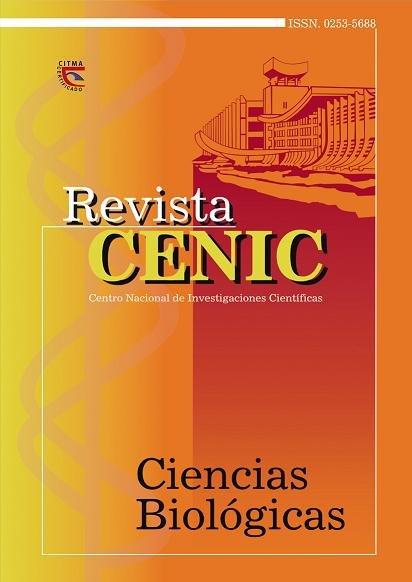Estimación de la calidad bacteriológica de la leche cruda por un método rápido (DIRAMIC)
Abstract
Four important areas in milk production on the country were selected for the study the bacteriology quality in raw milk by means of DIRAMIC system methodology.
For this purpose, East (area A), Center (area B) and West (area C and D) samples were examined. The samples (n = 628) were taken right after the arrival of the collecting trucks to the milk plants and automatically taken the equipped Labs. The bacteriological classification of the samples were made taking into account the result of the calibration curve obtained after an 8 h incubation when the system was validated. To have trustable criteria of level of coliforms were chosen a sample of 18 % (n = 116) an in 5 % (31) of it was applied isolation of predominant stumps. The results showed that 75 % of the studied samples were above the specification parameter (1 · 106 UFC/mL) established for raw milk in the country, without remarkable differences among the zonas. In the levels we can see that 54,48 % of them were at 107 UFC/mL level of above while only 30,28 % were at 105 UFC/mL or below. The bigger contamination was represented by coliform germs, with a media above 106 UFC/mL, followed by Pseudomonas spp, and the Bacillus, which was found in 100 % of the cases, while Streptococcus spp.,Staphylococcus spp., Proteus spp. and Streptomyces spp., varied between 10 and 30 %. So, authors concluded saying the through the DIRAMIC system the results of the bacteriological criterium of raw milk can be obtained in 8 h, while it taken 48 to 72 h to obtain it through the conventional method, moreover, there are no significant differences among the classification levels.
Downloads

Downloads
Published
How to Cite
Issue
Section
License
Copyright (c) 2002 Copyright (c) 2002 Revista CENIC Ciencias Biológicas.

This work is licensed under a Creative Commons Attribution-NonCommercial-ShareAlike 4.0 International License.
Los autores que publican en esta revista están de acuerdo con los siguientes términos:
Los autores conservan los derechos de autor y garantizan a la revista el derecho de ser la primera publicación del trabajo al igual que licenciado bajo una Creative Commons Atribución-NoComercial-CompartirIgual 4.0 Internacional que permite a otros compartir el trabajo con un reconocimiento de la autoría del trabajo y la publicación inicial en esta revista.
Los autores pueden establecer por separado acuerdos adicionales para la distribución no exclusiva de la versión de la obra publicada en la revista (por ejemplo, situarlo en un repositorio institucional o publicarlo en un libro), con un reconocimiento de su publicación inicial en esta revista.
Se permite y se anima a los autores a difundir sus trabajos electrónicamente (por ejemplo, en repositorios institucionales o en su propio sitio web) antes y durante el proceso de envío, ya que puede dar lugar a intercambios productivos, así como a una citación más temprana y mayor de los trabajos publicados (Véase The Effect of Open Access) (en inglés).














